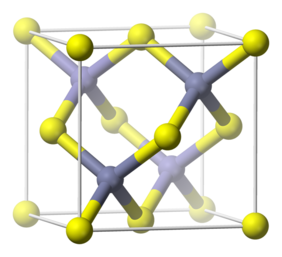In the past few years, a broad variety of different solar cells fabricated from various materials have been designed by engineers around the globe. Some of them consist of cadmium telluride (CdTe), which is a stable crystalline semiconducting compound comprised of cadmium and tellurium. Solar cells consisting of this material are able to produce electricity at a low cost and have a lot of advantageous features, including fast cadmium telluride absorber deposition, cadmium chloride treatment and copper doping. The process of doping introduces impurities into a semiconductor to modulate some of its properties. Many CdTe-based solar cells are subjected to copper doping. However, this process can sometimes lead to low photovoltage and electrical instability.
Now (2021), scientists at the Universities of Toledo and Alabama have experimented with group V elements, consisting of transition metals, to dope cadmium telluride and might have found a way to create better performing group V-doped solar technologies by adding selenium to cadmium telluride through low-temperature and ex-situ doping. So far, many group V-doped solar cells have exhibited efficiencies of over 20%. Although these results are indeed promising, group V-doped selenium-alloyed cadmium telluride solar technologies face obstacles including post-deposition doping activation processes, short carrier lifetimes and low activation ratios. The scientists assumed that they might be able to reduce these problems using group V chlorides. They doped their selenium-alloyed cadmium telluride solar cells employing a series of group V highly ionic materials, including phosphorus trichloride, arsenic trichloride, antimony trichloride and bismuth trichloride.
The dopant activation ratio was 5.88% for arsenic trichloride doped cadmium selenide telluride solar cells, hole densities reached >2x1015cm-3 and carrier lifetime was longer than 20ns. The ex-situ arsenic doped selenium-alloyed cadmium telluride solar cells showed open-circuit voltages of -863mV, compared to the highest open-circuit voltage of 852mV for copper-doped cadmium selenide telluride solar cells.
Scientists have long sought to improve solar cells made of cadmium telluride. In 2016, a cadmium telluride solar cell doped with a Group V element was designed which had a lifespan comparable to those in gallium arsenide cells. Furthermore, they found that the deposition of nanocrystalline cadmium sulphide layers on selenium-alloyed cadmium telluride, which were not ideal for commonly-used doped solar cells, caused no damage to the selenium-alloyed cadmium telluride surface and showed excellent junction transport properties. These results enabled the fabrication of selenium-alloyed cadmium telluride solar cells with open-circuit voltage greater than 1 V.
In 2018, scientists researched in-situ antimony, arsenic, and phosphorus doping and post-growth annealing, which was found to increase hole density without reducing the lifetime of thin polycrystalline selenium-alloyed cadmium telluride films. This was a promising result to further advance solar performance and achieve costs below conventional electricity sources.
In 2019, scientists were able to significantly improve doped solar cell efficiencies by doping polycrystalline cadmium chalcogenide cadmium telluride, cadmium selenide and their mixed ternary crystal films with arsenic while entirely removing copper from the solar cell. The absorber majority-carrier density was increased without reducing the lifetime, and was coupled with a high photocurrent greater than 30 mA cm−2. All in all, their doped solar cells had improved stability and showed 20.8% cell efficiency.
The new doping method has several advantages: the group V diffusion doping process is fairly inexpensive and can be implemented at low temperatures. Also, it is very similar to more conventional copper doping processes, which should make it easy to implement and include it in existing solar cell manufacturing facilities. Moreover, the solar cells designed by the researchers achieved remarkable results, in terms of efficiencies, carrier lifetimes and dopant activation ratios. They had similar efficiencies as existing copper-doped cadmium-telluride-based solar cells.
This research will undoubtedly prove another valuable contribution to the development of more efficient group V doping strategies, which will hopefully enable developing competitive and highly efficient cadmium-telluride-based solar cells.
